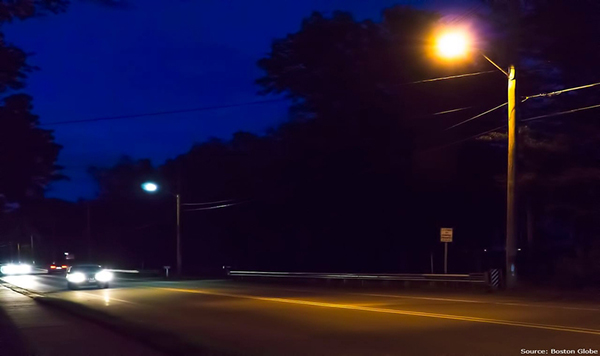
When it comes to outdoor applications, one of the major problems for both commercial and industrial lighting contractors is glare. In walkways and large areas, high-power LEDs are used in combination with TIR lenses and/or reflectors, which result in bright but small light point sources delivering very high luminance levels. However, such light also creates uncomfortable LED glare, and this is especially true for fixtures that have extreme bat-wing light distribution characteristics.
Before we delve further into the subject, let's understand what glare is and what are its kinds, causes & solutions!
Glare: What Is That?
There are two kinds of glare we get to see in lighting applications today — discomfort glare and disability glare. When rays of light pass through the eye, they scatter by diffusion. Disability glare occurs when the light source in the field of view is of high intensity, and the scattering of light leads to the superimposition of a luminous haze over the retina. This ultimately causes the impairment of the viewer’s vision. On the other hand, discomfort glare is simply a result of overly bright light sources in the field of view. Here, the viewer just has to adapt their eyes to the brightness level, which does create annoyance but causes no harm. It should be noted that most lighting standards do not include or specify design targets for discomfort glare.
How Glare In Lights Impacts Us On A Daily Basis?
People walking on streets or parks are easily affected by glare through pole/fitting LED lights, especially when the surrounding space is poorly lit. They are impacted in the glare zone 0-75° from the luminaires nadir, whereas vehicle drivers are more likely to be impacted in the glare zone 75-90° from the luminaires nadir. In addition, lights with glare are so directional that while it results in excellent illumination of a particular area, the adjacent areas tend to be covered in darkness, compromising the safety and perception of the overall space.
How To Deal With Glare In Lights?
The problem of glare has become so prominent in the industry that manufacturers have started developing and adapting techniques to reduce this effect. They have begun incorporating diffusers in luminaires, which to some extent, soften the pixelation. The potential downside to this is that diffusers often do it at the expense of optical distribution and efficacy, as there is a scattering of the light which limits the control in applications. Still, incorporating diffusers in modern lights has been a prevalent practice in the industry, with most LED service providers using it to give their customers a low-glare, efficient lighting experience.
Another way you can minimize LEDs’ glare is by reducing the space between LEDs (known as pitch). However, this has other challenges in optical design because if the LED lights are too close to each other, there is limited space left and limited design freedom.
Here are some other ways the effects of glare in outdoor lights can be controlled:
Talking about color temperatures, do you know that you can actually switch to a different color temperature without actually changing the light? Yes, with just flicking a switch of our CCT & Wattage Selectable lights, you can go from 5500 K to 3000 K. Check out IKIO’s CPS Series and see how you can extensively cut down the number of SKUs while saving time, space, and funds in the process.
Luminaire Glare Metrics
What makes glare control in lights difficult is that there are no set metrics to quantify discomfort glare. They are usually based on subjective ratings and hence vary greatly. To counter this issue, time and again, companies have introduced many different models to categorize glare as a metric, but none were able to make it universal. Currently, the most popular metric is the unified glare rating (UGR), however, it is mainly used for interiors.
For lighting applications in outdoor areas, glare concepts such as "threshold increment IT" and "glare control mark G" have been developed, especially in regards to road lighting for motorized traffic. In the G-rating metric — a system on the BUG rating scale (based on IES TM-155) — the scale for the glare rating is based on an absolute value in lumens depending on the zonal lumens of the distribution. When comparing luminaires, this metric can be used to extract the environmental factors that are independent of the luminaire. However, this metric is not always ideal, given that it is based on luminous flux and not true luminaire luminance. Moreover, it does not consider the other factors that might affect the glare directly, such as luminaire uniformity and the size of the luminance opening.
While there have been continuous advancements in lighting technology, the existing standards and metrics do have some drawbacks making it challenging to specify a luminaire without resorting to expensive and time-consuming mock-ups. Team IKIO can help you with this!
We offer a vast range of outdoor lights that are specifically designed to brighten up your outdoor spaces while also keeping the glare in check. If you need exterior lights for your commercial property, you must definitely check out IKIO’s Locus Area Luminaire, Dynamo Flood Light or CPS Wallpack, all of which can prove to be excellent options for your lighting needs. What’s more? Our team can also customize the LED solution so it remains unique to you. Contact us today at (1) 844-533-4546 and let us light up your commercial or industrial space right!